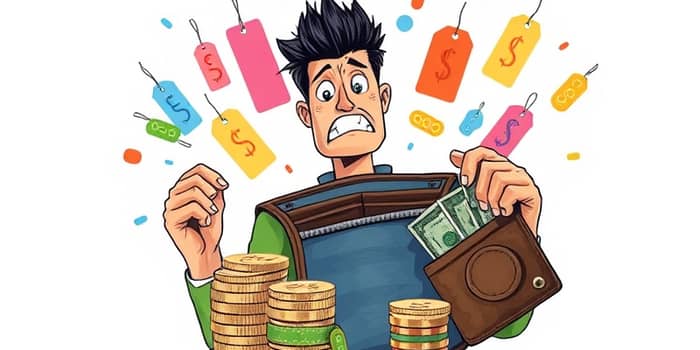Inflation is an economic phenomenon that impacts every aspect of our daily lives, from the price of groceries to the value of long-term savings. While often discussed in macroeconomic terms, its true significance lies in how it influences individual purchasing power and financial decisions. By grasping the underlying causes, measurement methods, and practical implications of inflation, readers can make informed choices to protect and grow their wealth over time.
Understanding Inflation: The Basics Explained
At its core, inflation refers to a gradual loss of purchasing power resulting from a sustained rise in the general price level of goods and services. Economists typically measure this rise using indices such as the Consumer Price Index (CPI), which tracks the average change in prices paid by consumers for a defined basket of items. When the CPI increases by, say, 3% over a year, it means that, on average, goods and services that cost $100 last year now cost $103.
To illustrate, consider the price of a cup of coffee in the United States: in 1970, it averaged $0.25; by 2019, that price had climbed to $1.59. For $5, a consumer could buy 20 cups in 1970 but only three cups in 2019. This simple example highlights how inflation can erode the value of money over time, making everyday purchases more expensive.
Key Types of Inflation
- Demand-Pull Inflation: Occurs when aggregate demand in an economy outpaces its productive capacity, driving prices higher.
- Cost-Push Inflation: Triggered by rising costs of inputs such as raw materials or wages, which businesses pass on to consumers.
- Built-In Inflation: Also known as the wage-price spiral, where higher wages lead to higher costs, prompting further price increases.
Main Drivers Behind Rising Prices
Several root causes can fuel inflationary pressures. First, an increase in money supply — often through central banks printing more currency or expanding credit — can reduce its value, pushing up prices. Supply chain bottlenecks, such as shortages of semiconductors or shipping delays, create scarcity, allowing producers to charge more. Inflation expectations themselves can become self-fulfilling when workers demand higher wages in anticipation of higher costs, prompting businesses to raise prices further. Additionally, external shocks like wars or natural disasters can disrupt production and transport, spurring price surges.
Measuring Inflation Accurately
The Consumer Price Index (CPI) remains the most widely cited measure of inflation, but it has limitations, such as fixed item categories and regional variations. Alternatives like the Wholesale Price Index (WPI) track price changes at the producer level, offering early signals of inflationary trends. The Personal Consumption Expenditures (PCE) Price Index, favored by the Federal Reserve, adjusts for changing consumer behavior, providing a broader perspective on spending patterns and price dynamics.
How Inflation Impacts Personal Finances
Inflation affects individuals in multiple ways. The most direct impact is the erosion of purchasing power: as prices rise, each dollar buys fewer goods and services. For savers, this means that money sitting idle in low-interest accounts loses real value over time. To truly grow wealth, investment returns must exceed the inflation rate.
Wage earners may find that pay raises fail to keep pace with rising living costs, leading to a decline in real wages and reduced discretionary income. Borrowers, on the other hand, can benefit by repaying fixed-rate loans with devalued dollars, effectively reducing the real cost of debt. Lenders suffer the opposite fate, receiving payments worth less than anticipated when they originated the loan.
Balancing the Pros and Cons of Inflation
While often viewed negatively, moderate inflation can have positive economic effects. It can reduce unemployment by allowing nominal wages to adjust more flexibly and encourage spending and investment instead of hoarding cash. It also grants central banks room to maneuver with monetary policy to smooth economic cycles. Conversely, high or unpredictable inflation can create uncertainty, discourage long-term investment, and disproportionately hurt individuals on fixed incomes.
Historical Perspectives on Inflation
History provides vivid lessons. In Weimar Germany during the early 1920s, hyperinflation spiraled out of control, with prices doubling every few days and the currency becoming virtually worthless. More recently, Venezuela has experienced extreme inflation rates, exceeding 1,000,000% in 2018, erasing savings and triggering widespread shortages. These episodes underscore the destructive potential of runaway inflation and the importance of sound monetary governance.
Practical Tips for Protecting Your Wealth
- Consider inflation-protected investments such as Treasury Inflation-Protected Securities (TIPS) or Series I savings bonds.
- Maintain a diversified investment portfolio including stocks, real estate, and commodities that historically outpace inflation.
- Negotiate regular salary reviews or cost-of-living adjustments to ensure wage growth aligns with inflation.
- Manage debt strategically: long-term fixed-rate loans become cheaper in real terms when inflation rises.
Current Trends and Looking Ahead
As of May 2025, inflation rates in many advanced economies have stabilized compared to pandemic-era spikes, though supply chain challenges and geopolitical tensions continue to pose risks. Central banks aim for a steady 2% annual inflation target, balancing growth and price stability. Keeping abreast of official CPI releases and economic forecasts can help individuals anticipate changes and adjust their financial plans accordingly.
Ultimately, understanding inflation empowers you to safeguard your financial future. By choosing appropriate investment vehicles, staying informed about policy shifts, and aligning income with cost-of-living changes, you can mitigate the erosive effects of rising prices and maintain the real value of your earnings and savings.
References
- https://www.investopedia.com/terms/i/inflation.asp
- https://en.wikipedia.org/wiki/Inflation
- https://www.youtube.com/watch?v=HQ-Kg_xgdhE
- https://gisme.georgetown.edu/news/what-the-hell-is-inflation-anyway/
- https://www.mckinsey.com/featured-insights/mckinsey-explainers/what-is-inflation
- https://www.jrmartincpa.com/how-does-inflation-influence-purchasing-power/
- https://www.pgpf.org/article/what-is-inflation-and-why-does-it-matter/
- https://www.clevelandfed.org/center-for-inflation-research/inflation-101










